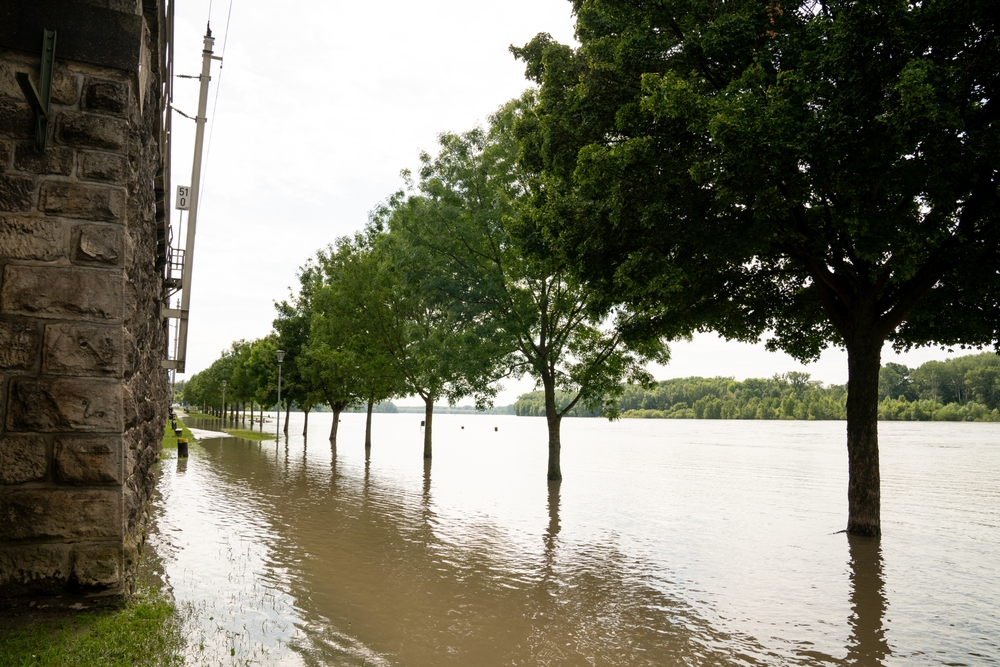Our drains and sewers are built to make sure that our waste and rainwater are dealt with effectively, but the unpredictability of the good old British weather can sometimes overwhelm even the toughest of drains.
With the rise in excessive rainfall and extreme weather events as a result of climate change, the risk of sewers and drains flooding is continuing to rise each year.
Flooding causes all kinds of problems regardless of how your sewage is disposed of, but if you have a septic tank or sewage treatment plant connected to a soakaway, it’s important to remain alert in case of prolonged rainfall to prevent your sewage treatment systems from overflowing.
When most people think of flooding, they imagine rivers bursting their banks and huge, violent spillages of water – whilst these types of floods certainly do occur, the largest risk comes from surface water flooding.
During periods of heavy rainfall, the soil becomes oversaturated and can lose its ability to absorb water, which leads to water travelling across the ground. This problem is further exacerbated by infrastructure development and the increased number of urban areas, where rainwater cannot soak through materials like concrete or tarmac into the ground.
This increased surface water is then discharged into our drains, quickly overwhelming the capacity of sewers and resulting in flooding due to wastewater backing up.
With climate change predicted to bring warmer and wetter weather, the problem of surface water flooding is only expected to grow.
This problem also applies to domestic and personal sewage treatment systems, particularly for septic tank users or systems which are connected to soakaways.
Sewage treatment systems are susceptible to flooding in a number of places, including the lid, underground pipes, connectors between the tank and the pipework, the outlet pipe, and the soakaway or drainage field.
If any components of your sewage treatment plant are not properly maintained, they can develop weak spots where effluent is more likely to leak from your system, meaning untreated wastewater being discharged directly into the environment.
Alongside this, drainage fields allow for the dissipation of wastewater back into the environment safely, but if there is too much water passing through the system, it can result in improperly treated sewage escaping from your soakaway.
Although it might not seem like it, human sewage is an incredibly hazardous substance, and any spillages, leaks or overflows should be dealt with as soon as possible – the consequences of pollution can be deadly, so ensuring your sewage treatment system remains compliant is essential.
If your sewage treatment system does flood, it can cause all sorts of serious problems, such as:
- Property and infrastructure damage
- Bad smells inside your premises
- Pollution of drinking water supply
- Other environmental pollution (and the cost of the clean-up):
- Contamination of arable land
- Contamination of livestock grazing
- Contamination waterways and the impact on aquatic life
- Fines and prosecution for non-compliance
In addition to these issues, there may also be permanent damage to your sewage treatment system, meaning you will have to pay for any repairs to ensure compliance going forward – components like motors or gearboxes can be expensive, especially if you have a commercial-grade sewage treatment plant.
Whilst there is very little you can do about the weather, there are certain steps you can take in order to minimise the effects of flooding once the water recedes.
Firstly, if you live in an area that experiences increased rainfall regularly, stay vigilant by keeping track of any flood warnings and alerts and ensure you know what to do in case a flood does occur.
Ensure that your septic tank or sewage treatment plant is prepared for wetter conditions and keep your system well maintained – your septic tank chambers should occasionally be checked on, and you should make sure that your pipes and outflow drains are properly cleaned with high-pressure water jetting.
If your sewage treatment system or septic tank does experience flooding, you should wait until the water level has dropped before you can assess the extent of the damage.
Once the water has receded, you should have your septic tank emptied and your sewage treatment system inspected by a professional to ensure that:
- Your soakaway remains effective
- No effluent has been discharged into the environment
- No issues have developed as a result of water damage.
At Proseptic, we understand that dealing with flooding can be a stressful and difficult time, which is why we will quickly and effectively assess your sewage treatment and drainage system – we guarantee friendly and reliable customer service throughout the process, helping you to get your sewage treatment system back up and running in no time.
If your sewage treatment or drainage system has been affected by flooding, or you would like to know more about our sewage treatment services, contact one of our team today.
